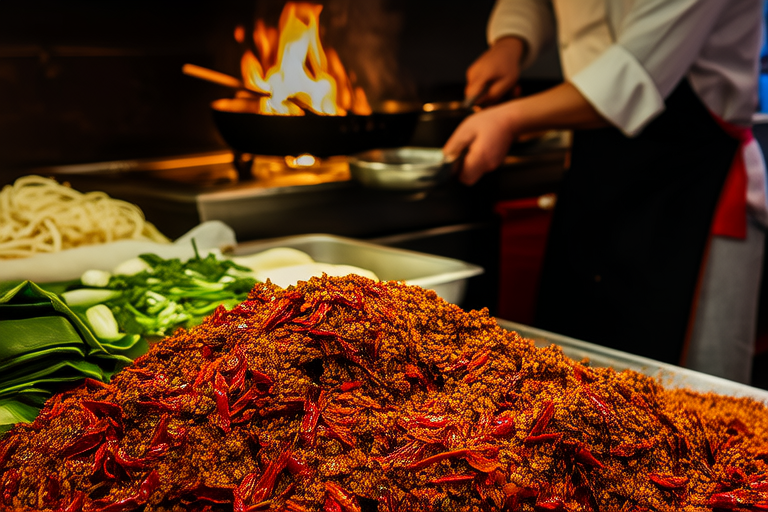Taste the World: How Travel Enhances Your Love for Gourmet Food

Taste the World: How Travel Enhances Your Love for Gourmet Food
Traveling is more than just visiting new places; it’s an opportunity to experience new cultures through their culinary offerings. Each destination presents a unique set of flavors, ingredients, and cooking techniques that can significantly enhance one’s appreciation for gourmet food. As you explore different parts of the world, you not only discover new tastes but also develop a deeper understanding of the artistry behind each dish. This journey into the world of gourmet food is not just about eating; it’s about embracing the cultural nuances that make each meal a memorable experience.
Exploring Diverse Ingredients and Cooking Methods
One of the most exciting aspects of traveling is discovering new ingredients and cooking methods that are unique to specific regions. Whether it’s the vibrant spices of India, the delicate teas of Japan, or the rich pastas of Italy, each country has its signature flavors and techniques that can truly transform your perspective on food. For instance, the complex spice blends of Indian cuisine, known as masalas, introduce a symphony of flavors that are both aromatic and robust. These spices, carefully selected and combined, create a depth of flavor that is unparalleled. Similarly, Japanese cuisine emphasizes the purity of ingredients and the precision of preparation, as seen in sushi, where the freshest fish is paired with perfectly seasoned rice. Such experiences not only expand your palate but also encourage you to seek out similar ingredients and techniques in your own kitchen.
Local markets and street food are particularly important in this exploration. They provide an authentic taste of a region’s culinary heritage. In Thailand, for example, the bustling street food scene offers a wide array of dishes, from fiery hot papaya salads to sweet and savory mango sticky rice. These dishes, prepared fresh and served immediately, showcase the versatility and creativity of Thai cuisine. Similarly, in Mexico, street food such as tacos al pastor and tamales offer a glimpse into the country’s rich culinary tradition. By immersing yourself in these markets and street food scenes, you gain a firsthand experience of the flavors that define a culture.
Experimentation with Unfamiliar Foods and Cuisines
Travel also encourages experimentation with unfamiliar foods and cuisines, which can lead to some of the most rewarding culinary experiences. Chefs around the world are constantly pushing boundaries, creating innovative dishes that challenge conventional tastes. Visiting Michelin-starred restaurants or even local eateries can provide a platform to try new combinations of flavors and textures. In France, for example, you might find yourself indulging in foie gras, a delicacy that combines the richness of duck liver with subtle herbs and spices. In contrast, in Ethiopia, the traditional injera bread, used as a utensil and base for various stews, introduces a tangy and slightly sour flavor that is both refreshing and intriguing.
These experiences not only broaden your culinary horizons but also inspire creativity in your own cooking. After returning from a trip, you may find yourself incorporating new ingredients and techniques into your repertoire. Perhaps you’ll try making your own version of a dish you enjoyed abroad or experiment with fusion recipes that blend elements from different cuisines. This process of experimentation allows you to develop your own unique style and approach to cooking, making each meal a personal expression of your travels.
Cultural Significance of Food
Food is deeply intertwined with culture, reflecting traditions, history, and social values. A single meal can tell a story about a people’s way of life, their struggles, and their triumphs. For example, in Italy, pasta is more than just a dish; it represents centuries of culinary innovation and regional pride. Each type of pasta, from the thin strands of spaghetti to the thick tubes of rigatoni, tells a different story about the local economy, climate, and agricultural practices. Similarly, in Japan, sushi is not merely a form of sustenance; it is a reflection of the country’s respect for nature and its commitment to sustainability. The precise slicing of fish, the careful selection of seaweed, and the meticulous arrangement of ingredients all demonstrate the artistry behind this dish.
Personal stories often deepen our understanding of these cultural connections. One memorable meal I had was in Morocco, where I joined a family for a traditional tagine dinner. The slow-cooked lamb, infused with cinnamon, ginger, and saffron, was tender and full of flavor. As we ate, the family shared stories about their ancestors and the origins of the dish. This meal was not just about the food; it was about the shared history and values that were passed down through generations. Another example is a visit to a small village in Peru, where I participated in a communal feast celebrating the harvest. The meal consisted of quinoa, potatoes, and corn, all grown locally, and it was a testament to the resilience and resourcefulness of the community.
Such experiences foster a deeper appreciation for the artistry behind gourmet food. They remind us that every dish is a product of human ingenuity, creativity, and passion. By embracing these cultural narratives, we gain a richer understanding of the world and the people who inhabit it.
Conclusion
In summary, travel plays a pivotal role in enhancing one’s love for gourmet food. It exposes us to diverse ingredients and cooking methods, encourages experimentation with unfamiliar foods and cuisines, and highlights the cultural significance of food. Each meal we share on our travels becomes a part of our personal narrative, enriching our understanding of the world and deepening our appreciation for the artistry behind gourmet food. So, whether you’re exploring the bustling markets of Marrakech or savoring a quiet dinner in a Parisian bistro, embrace the culinary adventures that await you. Let each bite be a gateway to new experiences and a celebration of the diverse and vibrant world of gourmet food.